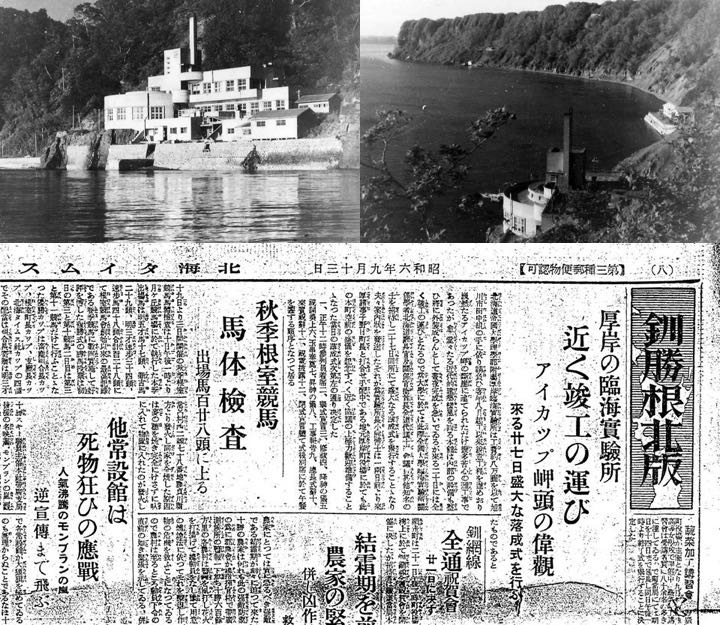
Akkeshi Marine Station of Hokkaido University is located on the shore of Akkeshi Bay, on the Pacific Coast of the eastern part of Hokkaido Island, Japan. It was founded in 1931 for biological research on marine animals and plants in this region and it is operated on a year-round basis.
Akkeshi Bay is connected with a shallow estuary, Akkeshi-ko, at the bayhead and with the Pacific Ocean at the bay-mouth. Most of its coast is rocky shore, although it also has some sandy beaches. At off the southeast coast of Hokkaido including Akkeshi Bay, the cold current 'Oyashio' flows down from the East Kamchatka current and the Okhotsk Sea Mode Water. In the Oyashio regions, massice spring phytoplankton bloom occur every spring. In addition, this area and its vicinity have a rich fauna and flora of boreal species, which indicates characteristic features different from the other marine stations in Japan. Thus, this is the only one biological station in Japan which is engaged in biological research on marine animals and plants of subarctic species.
This station had belonged previously to the Faculty of Science, Hokkaido University. But now, it belongs to FIELD SCIENCE CENTER FOR NORTHERN BIOSHPERE, HOKKAIDO UNIVERSITY, since April 2001. This station can host graduate students, both in master and doctor courses, who are willing to study marine ecology, environmental biology, biogeography, and other related fields, and post-doctoral fellows of the related fields.

The station consists of 3 buildings with a total of over 2,300 m2 of floor space and a boat house. Facilities include 3 staff's office rooms, 2 guest laboratories, 2 class rooms, an ecology laboratory, a chemistry laboratory, an analysis laboratory, 2 sea animal culture rooms, an electron microscope room, a clean room, 3 constant temperate rooms, 2 photographic darkrooms, a commuter room, a meeting room, a machine shop, a library, a graduate student room, and an administrative office. Several laboratories are supplied with running seawater. An adjacent wildlife area of 400,000 m2 including climax forests belongs to the station for conservation and field studies.
The station keeps a museum of natural history that has more than 2,000 specimens, animals and plants mostly collected from the vicinity. It is open to the public from May to October.(Visit Facebook!)
The station maintains 3 boats, the New Misago (HP 540 kw, 13.15 m, capacity 30), the Umiaisa (capacity 11), and the Etopirika (capacity 11).
